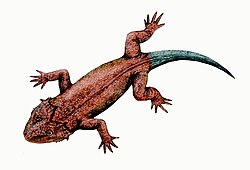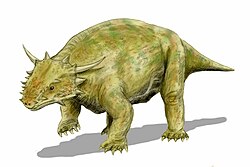| Lanthanosuchoids Temporal range: Late Carboniferous - Late Permian, | |
|---|---|
 | |
| Restoration of Lanthanosuchus watsoni | |
| Scientific classification | |
| Kingdom: | Animalia |
| Phylum: | Chordata |
| Class: | Reptilia |
| Subclass: | † Parareptilia |
| Order: | † Procolophonomorpha |
| Clade: | † Ankyramorpha |
| Superfamily: | † Lanthanosuchoidea Ivachnenko, 1980 |
| Subgroups | |
Lanthanosuchoidea is an extinct superfamily of ankyramorph parareptiles from the middle Pennsylvanian to the middle Guadalupian epoch (Moscovian [1] - Wordian stages) of Europe, North America and Asia. [2] It was named by the Russian paleontologist Ivachnenko in 1980, and it contains two families Acleistorhinidae and Lanthanosuchidae. [3]

